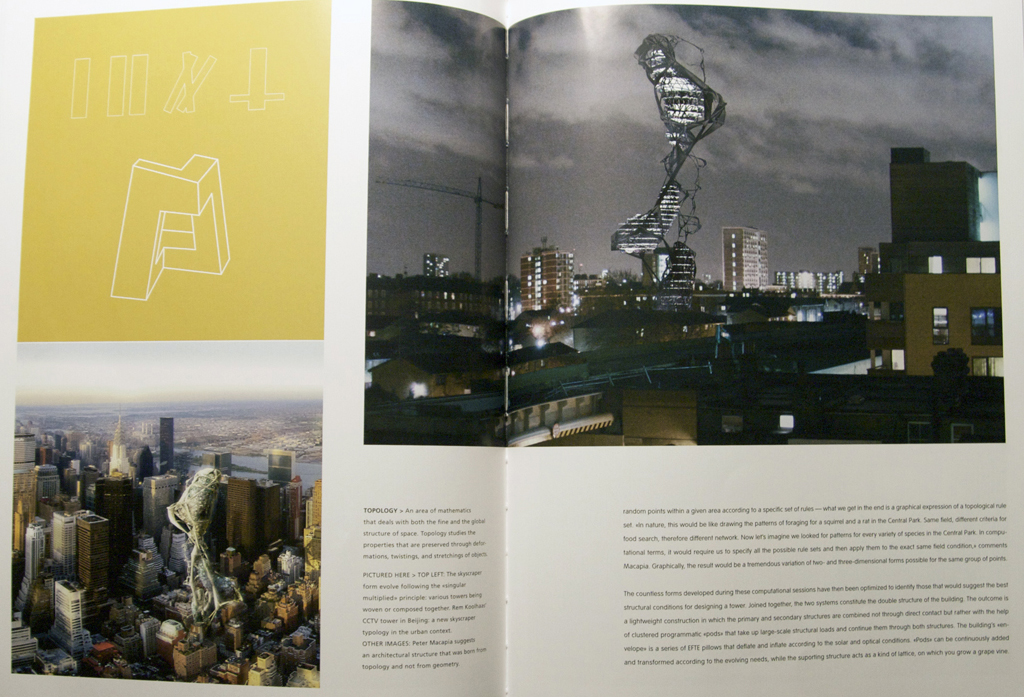 |
“We have entered a moment in which we might actually begin to think of architecture and design without geometry. Of course, on a certain level, that seems impossible. but let’s consider a few things. First, the origin of architecture in geometry depends on a rational construction system or geometrical figures. And the upshot is that the architectural result, or effect, is dependent on that pictorial logic. Whatever I construct as a geometrical figure as an aspect of an architectural element (whether form, element, or layout), the figural conditions of geometry are directly implied in the figural elements of the architecture. When topology was introduced into architectural discourse during the 90s, it enabled architects to think of spatiality in terms other than metric and figural (even if what architects often did was simply apply a topological diagram from mathematics to an architectural condition). Topology doesn’t care about figures or form, per se, but rather conditions of invariance and continuity. it is like Geometry with great indifference to metric pace. Of course this was not the only mathematical shift of focus for architecture. During the 90s there was also a tremendous interest in calculus in terms of the formal freedom it gave architects to consider when drawing or designing complex form. But in general terms, topology has not yet been considered algorithmically and that may in fact be an inherently more intense problem for architectural thinking.”
|
|
The basis for my research in this project was to look at the problem of design from the point of view of computation and algorithm. If topology (rather than geometry) can shift the way in which we think of the spatiality of the tower, then we ought to consider how that problem might manifest itself at the level of structure. And so the investigation looked at the problem of structure as topological rather than geometrical starting point. But let me specify what is significant about this on a more general level, it is a kind of gross topology. Gross means essentially two thing: first it is a lower dimension topological problem, that is, it deals with things like 2- and 3-space and second it works from a generalized (schematic) notion of space as manifold. Topology as such deals with ways of distinguishing manifolds. Differential topology deals with non-metrical notions of manifolds while differential geometry deals with metrical notions of manifolds. But a manifold as such is a topological space with local Euclidean characteristics.